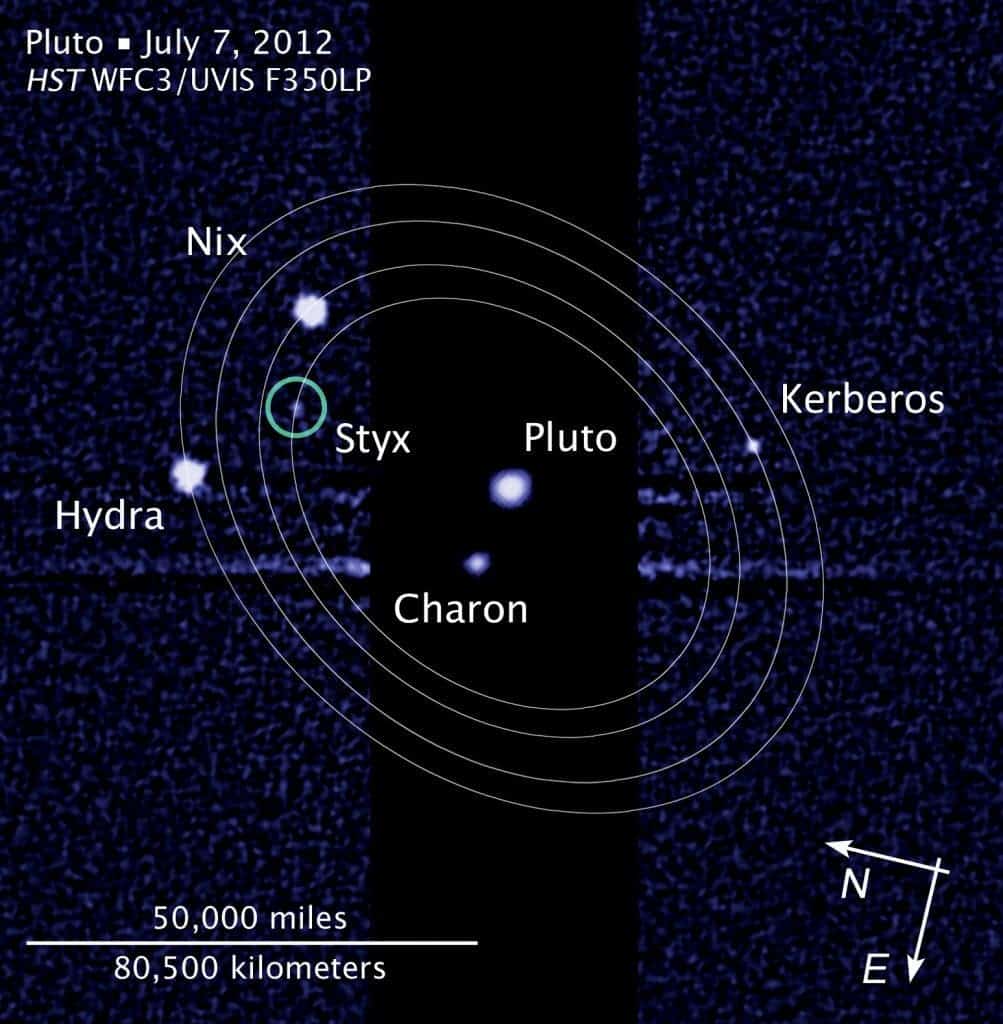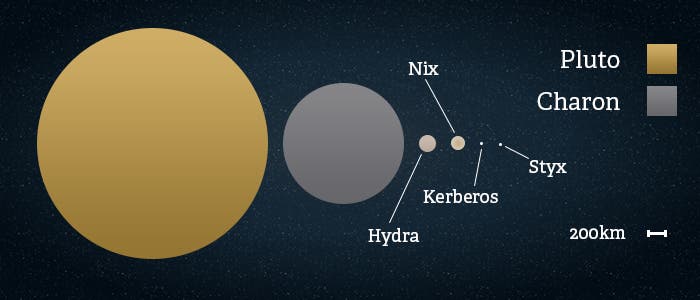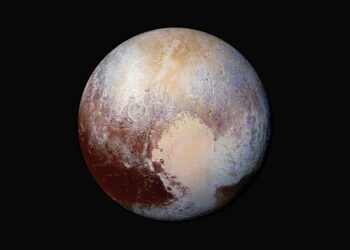With NASA’s New Horizons shuttle basically knocking on Pluto’s door, Mark Showalter and Douglas Hamilton present new theories on Pluto’s moons and make predictions about what New Horizons will observe. They propose complex interactions and an intricate “dance” of Pluto’s moons – a miniature version of our solar system.

Despite not being considered a planet anymore, Pluto is still one of the more interesting places in our solar system. NASA launched the New Horizons probe particularly to study it and its moons in 2006. Now, after 9 years, after going through most of our solar system, after 189,916 km (118,008 mi), the probe is approaching its destination. It already took some spectacular close-range photos of Pluto which astronomers are already analyzing, but it’s preparing for more: for the first time, humanity will be able to directly study Pluto’s interactions with its moons (we don’t even know for sure how many moons Pluto has).
“If you polled my science team, I’m quite sure that the majority would be surprised not to find more moons,” says Alan Stern, principal investigator for the New Horizons mission. “The question is are we going to find 2, or 10 or 20? I wouldn’t put my bets on zero.”
But before that happens, scientists are already coming up with theories – Showalter and Hamilton calculated the the orbits of the four smaller moons and turned up some surprises.
Pluto has five known moons: Charon (the largest, with a diameter just over half that of Pluto), Nix, Hydra, Kerberos, and Styx. For starters, they propose that Nix is rotating chaotically, something that you can rarely say about a celestial body.
“It’s not just a little bit chaotic,” Dr. Showalter said. “Nix can flip its entire pole. It could actually be possible to spend a day on Nix in which the sun rises in the east and sets in the north. It is almost random-looking in the way it rotates.”
Furthermore, Pluto’s four small moons — Styx, Nix, Kerberos and Hydra —follow near-circular, near-equatorial orbits around the central ‘binary planet’ comprising Pluto and its large moon, Charon. But it gets even better: although with less certainty, they believe that Styx and Kerberos are also behaving chaotically.

“It’s just that we haven’t been able to measure them well enough to see it yet,” he said.
Of course, Hydra, the farthest known moon of Pluto, couldn’t miss the party. Although not so chaotically, it too seems to exhibit a tumbling motion.
But there is some logic in all this chaos. Styx, Nix and Hydra are tied together by a three-body resonance, so any chaotic movement exhibited by one of them will spread the chaos further to the others. Astronomers believe that within these interactions lie the key to understanding how the Pluto system took shape.
“This is not random chance,” Dr. Showalter said. “There is definitely something about the nature of these near relationships that is a clue about how this system formed and evolved.”
They came up with these conclusion by analyzing images taken between 2002 and 2005, which of course, provide nowhere near the resolution and clarity that New Horizons can. So the good news is that we won’t have to wait much longer before we can get a better view of what’s actually happening at the edge of our solar system.
Journal Reference: M. R. Showalter & D. P. Hamilton. Resonant interactions and chaotic rotation of Pluto’s small moons. Nature 522, 45–49 (04 June 2015) doi:10.1038/nature14469






